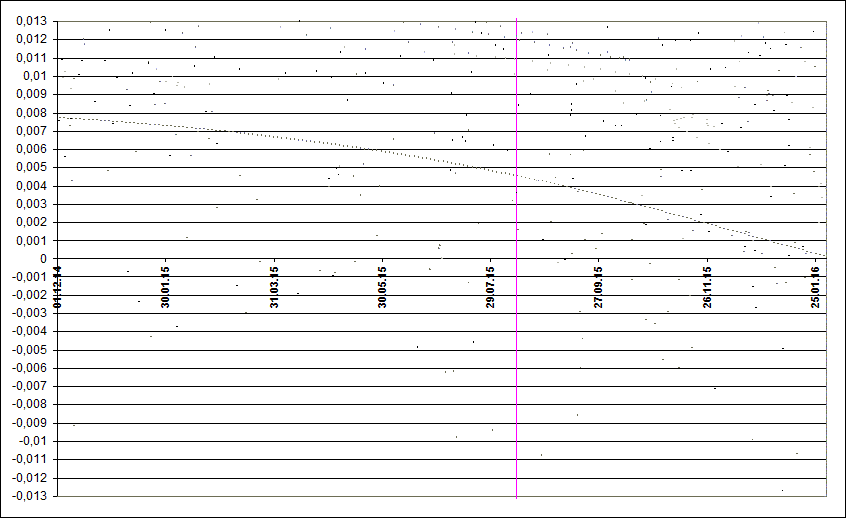Perseids 2015: prediction of activity
to the list of predictions

Fig. 1. Space-temporal projection of Perseid trails parts onto their minimal distance passages in 2015 (correspondence between colours of the particles and their ejection velocities can be seen here).
In 2015-2017 the Earth will encounter the perturbed part of Perseid stream, which was shifted closer to the Earth's orbit by Jupiter gravitation. This means that in these years we have to expect heightened Perseid activity. The mostly shifted particles (by about 0.01 AU) will encounter the Earth in 2016. For 2015 the value of shift is about 0.0045 AU, so in 2015 the Perseids are expected to give higher than usual activity in recent years, and ZHR should reach ~120 meteors.
Time of activity maximum corresponding to solar longitude 140.0° (IMO data) is 6:31 UT on August 13.
References
1. "Comet's dust 2.0" program by S. Shanov and S. Dubrovsky. [Used for orbital computations.]
2. Lyytinen E, van Flandern T. "Predicting the strength of Leonid outbursts", 2000, Icarus, P. 158-160.
3. Kasuo Kinoshita, http://jcometobs.web.fc2.com/ [Orbital elements of the comet 109P Swift-Tuttle]
4. Jenniskens P. Meteor showers and their parent comets, 2006, 780 p.
Time of activity maximum corresponding to solar longitude 140.0° (IMO data) is 6:31 UT on August 13.
References
1. "Comet's dust 2.0" program by S. Shanov and S. Dubrovsky. [Used for orbital computations.]
2. Lyytinen E, van Flandern T. "Predicting the strength of Leonid outbursts", 2000, Icarus, P. 158-160.
3. Kasuo Kinoshita, http://jcometobs.web.fc2.com/ [Orbital elements of the comet 109P Swift-Tuttle]
4. Jenniskens P. Meteor showers and their parent comets, 2006, 780 p.